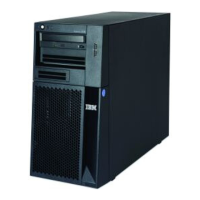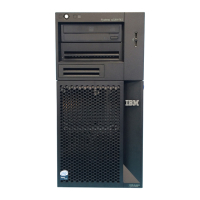Operating System/400, 5769-SS1
464 AS/400e System Handbook
– Disk mirroring for the entire system or one individual auxiliary storage pool. If the
entire system is mirrored, double the disk capacity is needed. Additional disk
controllers and placement of these controllers on separate buses can give even
higher protection.
– Disk mirroring for the entire system or one Large capacity disk load balancing. The
ability to balance data across disk arms in an ASP, based on performance, is provided
in V4R4. The disk load balancing function identifies hot data versus cold data and
spreads data across the disk arms to balance utilization accordingly.
Disk load balancing provides the ability to balance data across disk arms in an ASP,
based on capacity. Data is spread across arms so each arm has the same percentage
of usage. This is especially useful when disk arms are added.
The ability to move low access data to slower, high capacity disk arms within an ASP
(for example, compressed disk) is provided as well. This involves identifying hot
versus cold data and moving the cold data to slower disk. Specific data can also be
targeted to move to a slower disk.
These functions are controlled with CL commands (no GUI interface).
– Journaling provides the capability to record all changes to records in a file as they
occur. These journaled changes are applied to the file if the system is lost. With the
implementation of remote journals, this protection can be extended to cover access
paths to provide faster recovery of access paths in the event of an abnormal system
termination.
– Commitment Control ensures that if a transaction requires multiple database
changes, all of them (or none of them) are made.
– Auxiliary Storage Pools (ASPs) are individual disks reserved for particular objects
(like individual libraries), which can be used to isolate those objects to assist in their
recovery. Up to 15 user ASPS allowed. All systems ship with one system ASP
configured.
– Save While Active function allows customers to continue to use applications while
data is backed up. This reduces the time that the applications are unavailable and the
time to save.
– Many save and restore commands, and the QSRSAVO API support concurrent (in
parallel) save and restore to multiple tape devices or multiple resources in a tape
library. The maximum save rate for large objects is no longer limited to the maximum
throughput capabilities of a single tape device. By using multiple tapes in parallel
(from 2 to 32), the maximum throughput can be increased and time-to-save and
time-to-restore is reduced, especially for very large objects.

